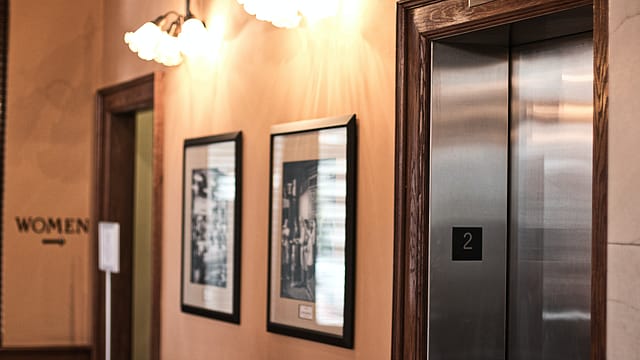The elevator and its global impact
ADVERTISEMENT

What do the locomotive steam engine and the modern elevator have in common?
The answer may surprise you. Each was an invention that debuted roughly during the First Industrial Revolution and drastically changed how, and where, cities could develop. The locomotive steam engine allowed for faster, more reliable travel to and among cities. The elevator is among only a handful of inventions that helped cities to grow upward.
In fact, elevators enabled the urban environment we know and love today.
It’s an often-overlooked mode of transportation that helped build cities, transformed how people live and work, and revolutionised architecture itself.
The people-moving industry has come a long way since 1852 when Elisha Graves Otis invented the elevator safety brake and inspired a solution to a universal problem—how to safely move freight from floor to floor without risking lives and destroying the cargo.
While safety and reliability remains paramount to the elevator business today, 21st century passengers expect more than their 19th century counterparts. The elevator industry is rising to meet customer demand for features such as increased connectivity and improved traffic flow, while planning for future trends in urban mobility.
Connecting to big data
December 2025
The annual Fortune 500 India list, the definitive compendium of corporate performance, is out. This year, the cumulative revenue of the Fortune 500 India companies has breached $2 trillion for the first time. Plus, find out which are the Best B-schools in India.
In an era defined by the Internet of Things (IoT), a new generation of elevators are smarter, more comfortable, more effective, data rich and more connected than ever before. This started with remote elevator monitoring, a capability pioneered more than 30 years ago, that dramatically improved customer service abilities.
Today, some elevators can collect real-time performance data that cloud-based algorithms then aggregate and analyse to help predict and prevent shutdowns. This process is called predictive maintenance. In some instances, this connectivity can even provide early notifications to customers before they are even aware of a potential problem.
Elevator connectivity can help field professionals diagnose and repair elevators. For example, many field professionals working at some elevator companies now have access to a suite of custom smartphone apps. These apps feature a range of capabilities that help perform daily tasks such as conducting diagnostic tests and tracking maintenance history. Ultimately these apps help their users to be more efficient and better serve customers.
Supporting world growth
Beyond evolving to use big data, elevators are also solving some of the cruxes posed by global urbanisation —the trend of people moving from rural areas to cities.
Take India’s urbanisation for example. According to a McKinsey report, it is expected that India’s major cities will house 590 million people, or 40% of the country’s population, by 2030. That increased headcount will undoubtedly congest city travel if current infrastructure is left unchanged. And that’s not just congestion on the roads and rails. With more people living and working in a city’s buildings, those structures will have to accommodate the increased traffic flow too. Some elevators can help alleviate a building’s congestion by using a specific technology that groups passengers with others going to the same or nearby floors to get passengers there faster and reduce stops. The time savings can be significant with some trips as much as 50% faster during peak travel periods.
In addition, certain elevators can use video analytics to help speed the flow of passenger traffic and send elevators to the floors where they are needed the most--reducing wait times by as much as 30%.
Finally, elevators can make it easier for passengers to summon an elevator as they’re approaching the elevator bank. Mobile apps can allow passengers to call their elevator ahead of time so it is there waiting for them when they arrive. These are just a few features that can help reduce the crowding that will come with urbanisation.
Forecasting for the future
Beyond global growth, elevators have a role in bringing future modes of travel to life. Leading aerospace companies are pursuing air taxis as a solution for future urban mobility. This is very exciting, but requires collaboration among key players to address the related logistics. If one were to hail an air taxi that lands on a roof, that person would need to travel up through a building to get to it. This is where elevators can provide the safe, seamless transportation needed to segue between city streets and rooftops.
As society enters the Fourth Industrial Revolution, it’s clear that the elevator will continue to play an integral role just as it had for the First Industrial Revolution.
Views are personal. The author is president, Otis India.
